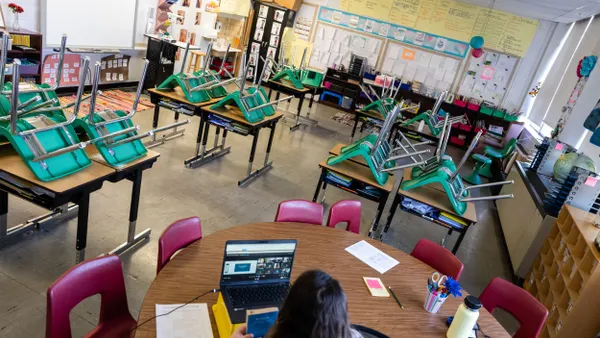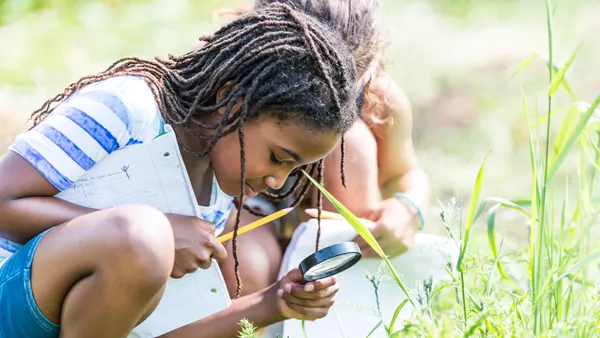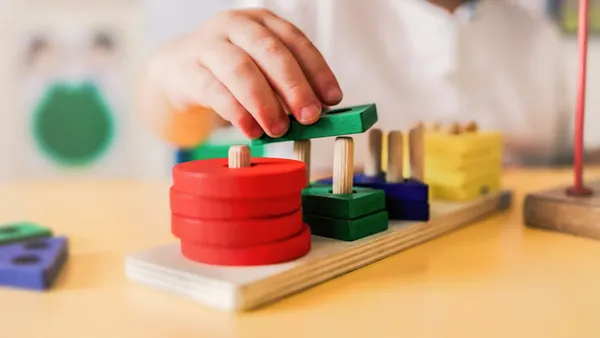Dive Brief:
- Encouraging students to engage in a discussion with their peers during classroom lessons can offer benefits such as introducing new viewpoints into the discourse or strengthening soft skills.
- The “social nature of learning,” in which education shifts from a lecture-based paradigm to one where students exchange ideas within a community, expands understanding while creating moments where students can have ownership in their learning, said Heather Schwartz, practice specialist at the Collaborative for Academic, Social and Emotional Learning.
- “Peer discussions are rich with opportunities for collaboration, perspective taking, active listening, and effective communication. But in order to truly gain skills, students need opportunities to learn, practice, and reflect on SEL [social-emotional learning],” she said.
Dive Insight:
Schwartz suggests that to create and promote productive classroom conversations, educators should make sure they’re taking steps early on in the school year that foster a collaborative environment. That includes being patient with students working to express their ideas, supporting them as they make errors, helping them reach answers rather than highlighting mistakes, and even encouraging them to ask questions and “challenge your ideas,” she said.
When learners feel more confident in voicing their opinions and questions, educators can turn conversations over to the classroom, guiding the learning process rather than controlling it.
“As students begin to take ownership of small and large group peer discussions, the teacher transitions into a coaching role to provide feedback in the context of authentic application,” Schwartz said. “For example, educators can practice ‘noticing and naming’ by identifying which competencies and mindsets they hear students applying during discussions with their peers.”
There are a number of strategies teachers can employ to help students grow into this role. They include encouraging students to share an idea or thought with perhaps one other student — or in a writing exercise — before sharing with the entire class. Students can also use sentence starters, prefacing their thoughts by saying they agree or disagree with a previous comment but want to add something to the conversation.
Schwartz said these approaches, tailored to development levels, are beneficial at the beginning of the year. While some students may already feel comfortable and confident in employing these skills, others may not. But allowing all learners to hone these abilities at the start of a semester can elevate conversations throughout the year.
“Academic conversations require specific strategies, and we miss important opportunities for learning when we assume that students walk through the door ready to dive in,” Schwartz said.











